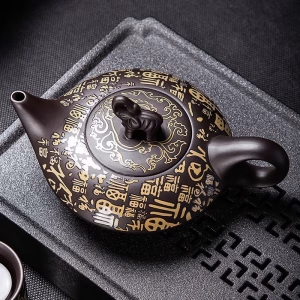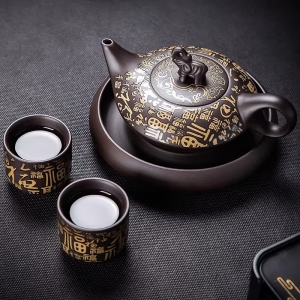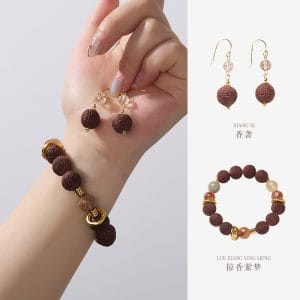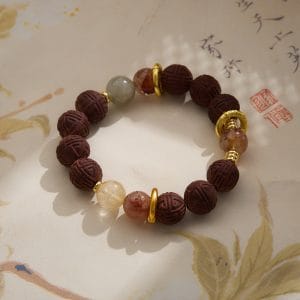The Living Legacy of Traditional Chinese Crafts

For centuries, China’s intangible cultural heritage has been woven into the fabric of daily life. From delicate porcelain to intricate embroidery, these ethnic handmade crafts tell stories of dynasties, philosophies, and regional identities. How did these practices survive the test of time? The answer lies in their deep connection to Chinese values and the meticulous passing of skills through generations.
Silk Embroidery: Threads of Imperial Elegance
Suzhou embroidery, one of China’s four famous embroidery styles, dates back over 2,000 years. Emperors once wore robes adorned with these shimmering designs, where a single piece could take years to complete. Recent industry reports suggest that over 60% of traditional embroidery workshops still use techniques unchanged since the Ming Dynasty. The craft isn’t just about beauty—every stitch carries symbolic meaning, from peonies representing prosperity to cranes symbolizing longevity.
Clay and Fire: The Alchemy of Chinese Ceramics
Few cultural handmade products embody China’s global influence like its ceramics. The iconic blue-and-white porcelain first captivated the world during the Tang Dynasty (618-907 AD). In Jingdezhen, the ‘Porcelain Capital,’ artisans still knead local ‘kaolin’ clay using methods perfected over 1,700 years. Have you ever noticed how traditional teacups feel warmer than modern ones? This comes from unique firing techniques that create microscopic air pockets in the clay.
Shadow Puppetry: Where Leather Meets Legend
In Shaanxi province, the art of shadow puppetry transforms cured donkey hide into moving masterpieces. These translucent figures reenact folk tales under oil lamps, just as they did for entertainment-starved villagers 2,000 years ago. Surveys indicate approximately 300 master puppeteers still perform nationwide, with younger generations embracing the craft through contemporary stories. Each puppet requires 24 precise steps—from carving facial expressions to attaching bamboo control rods.
Bamboo Weaving: The Philosophy of Flexibility
In southern China’s bamboo forests, weaving isn’t just a craft—it’s a lesson in resilience. Farmers created rain hats, fish traps, and even baby carriers from this ‘green steel.’ The process reflects Daoist principles: rigid bamboo becomes supple when split, just as challenges can be overcome through adaptability. Today, these ethnic handmade crafts evolve into modern lampshades and handbags while preserving ancient knotting techniques.
Lacquerware: A Patient Shine
Few traditional Chinese crafts demand as much patience as lacquerware. Artisans in Fujian apply up to 300 layers of tree sap, with each coat drying for days before polishing. The result? Boxes and trays that glow for centuries. During the Han Dynasty, lacquer was worth ten times its weight in bronze. Modern workshops maintain this reverence—some pieces still incorporate crushed oyster shells for a celestial shimmer effect.
Preserving the Soul of Cultural Handmade Products
As China modernizes, safeguarding these crafts becomes crucial. Master artisans now teach in schools, while e-commerce platforms connect rural workshops with global collectors. The true magic lies in their continuity: a porcelain vase fired today shares the same soul as those that crossed the Silk Road. These aren’t just relics—they’re living conversations between past and present, waiting for the next generation to add their chapter.
You may also like
Aladdin’s Lamp Heat-Change Purple Clay Tea Pot
Original price was: $108.00.$78.00Current price is: $78.00. Add to cartAncient Craft Herbal Scented Bead Bracelet with Gold Rutile Quartz, Paired with Sterling Silver (925) Hook Earrings
Original price was: $322.00.$198.00Current price is: $198.00. Add to cartAncient Craftsmanship & ICH Herbal Beads Bracelet with Yellow Citrine & Silver Filigree Cloud-Patterned Luck-Boosting Beads
Original price was: $128.00.$89.00Current price is: $89.00. Add to cartGuangxi Zhuang Brocade Handmade Tote – Ethnic Boho Large-Capacity Shoulder Bag
Original price was: $172.00.$150.00Current price is: $150.00. Add to cartThe Palace Museum Paper-Cut Light Art Fridge Magnets: Chinese Cultural Style Creative Gift Series
Price range: $27.00 through $36.00 Select options This product has multiple variants. The options may be chosen on the product pageHandwoven Zhuang Brocade Tote Bag – Large-Capacity Boho Shoulder Bag
Original price was: $178.00.$154.00Current price is: $154.00. Add to cart












